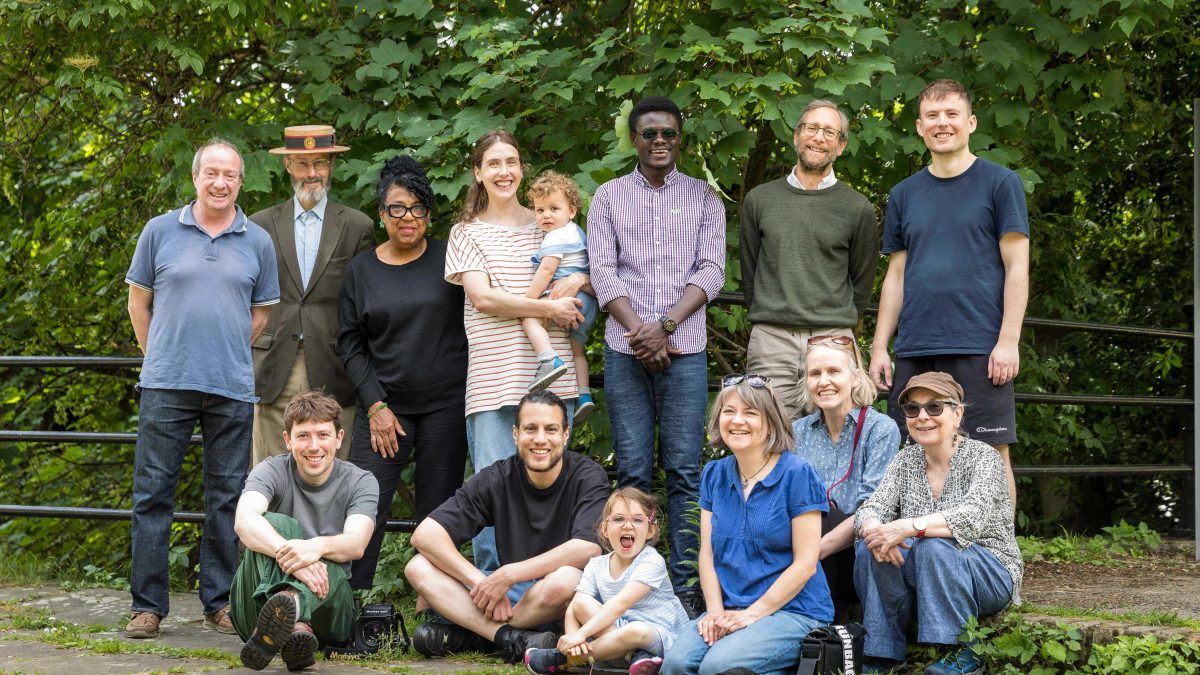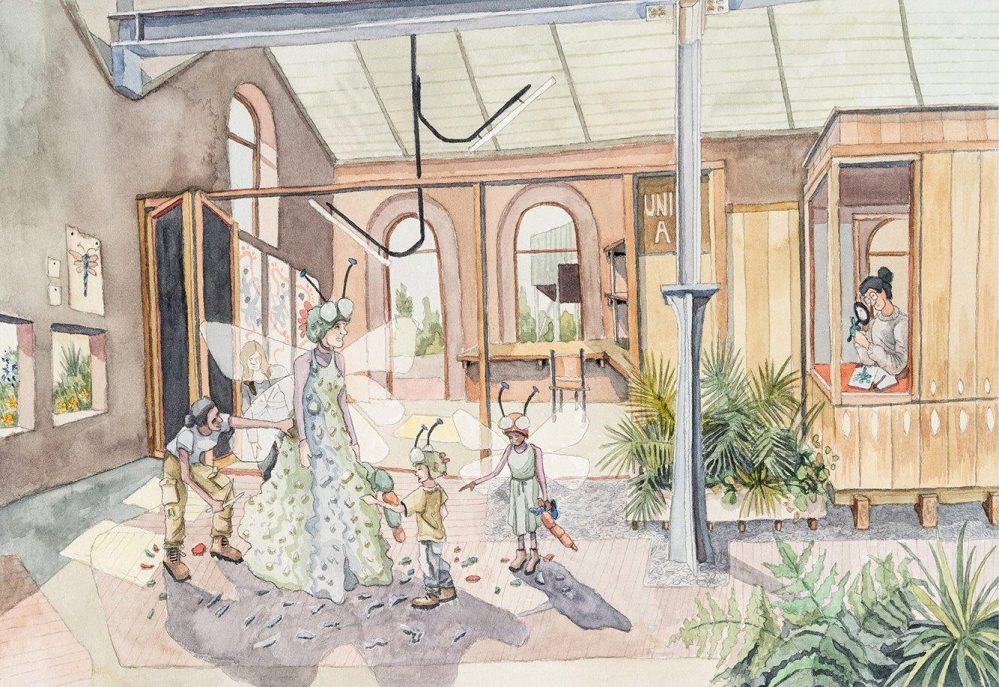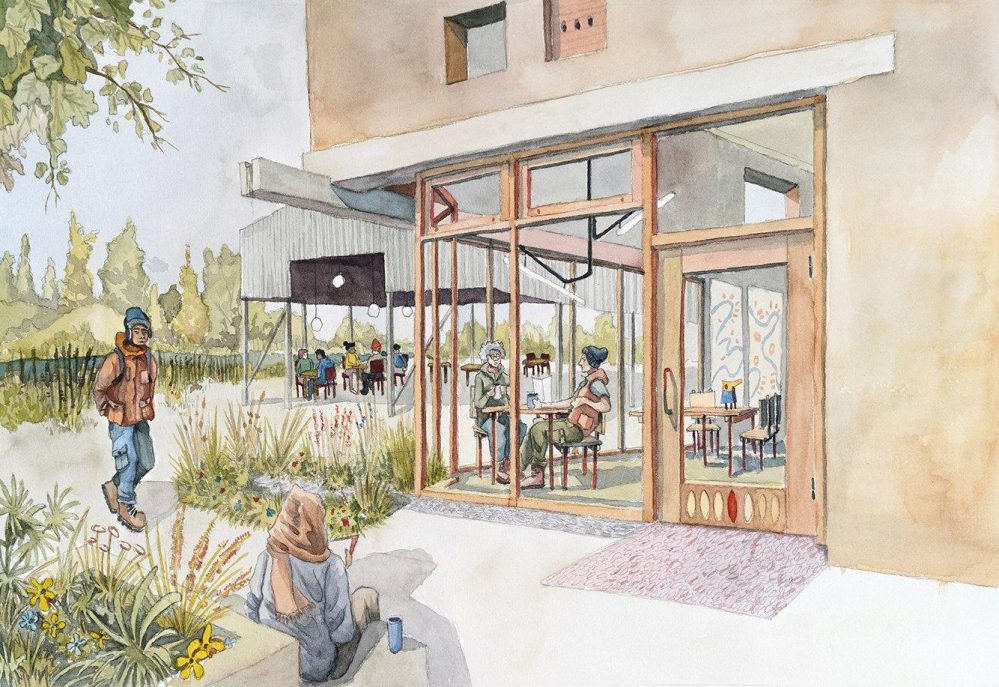
East London Waterworks Park Leyton
East London Waterworks Park is the brainchild of a volunteer-led charity based across Hackney and
Waltham Forest, formed with the aim of buying and transforming a Thames Water depot into the first new swimming ponds in London to be created since Hampstead Ponds in 1777.
The biodiversity of the old, 5.68-hectare depot that borders Hackney and Waltham Forest is as you might expect limited as it is currently a huge slab of concrete that is predominantly used for storing machinery.
This is at odds with the rest of the surrounding area – The River Lee Country Park stretches for 26 miles from the Limehouse Basin in the River Thames, all the way up to Hertford. It is often referred to as the great green lung in the east and includes Walthamstow Marshes, a Site of Special Scientific Interest (SSI) as one of the last remaining examples of semi-natural wetland in Greater London.
The marshes contain a variety of plants such as a range of neutral grassland types, sedge marsh, reed swamp, sallow scrub and areas of tall herb vegetation. There are several species of plant and insect which are uncommon in the London area, such as the Essex skipper butterfly, the pyralid moth, and the sporadic breeding by the nationally endangered marsh warbler. The breeding bird community includes reed bunting, and reed, sedge and willow warblers.
There are also numerous parks in the area such as Millfields, Jubilee and Springfield, and the River Lea that borders the site, which although heavily polluted, we hope that we can influence and inspire local businesses and the community to work together to improve it and take better care of it in future.
The Lee Valley Biodiversity Plan (LV BAP) aims to reconnect all these different areas through the approach to conservation. The charity is using the LV BAP and ‘Save Lea Marshes’ Waterworks Meadow wildlife survey, as indicators of how reconnection of the site with its surrounding areas may benefit the local ecosystem. Logged species of national 'principal importance' include the Soprano Pipistrelle bat, Brown-banded Carder Bee, Common toad, and even Bitterns which were once considered endangered.
What else could the park do for this area of London? The average garden pond stores far more carbon and attracts more wildlife than a similar size woodland or grassland area. The ponds would cover around 5,000 square metres and allow more than 1,000 people to swim each day for free. There will also be space for scientific research, arts, and a make and repair café.
Obviously until we break ground and test the soil and water, we won’t be sure of the scale of the challenge we face. The site had a landfill license in the 80s so there could be numerous different contaminants to deal with. Data we have access to from the school planning applications suggests that the site is no more contaminated than any other brownfield site.
Having access to green and blue spaces makes people mentally healthier according to a significant body of academic research bodies. Through opportunities to learn, grow, conservation volunteering and wild swimming, we plan to connect people with nature in new and tangible ways.
But it’s not just about the nature side of the project – it’s about the community. We want to transform this area with local people at the heart of every conversation. To reach beyond the usual audiences, the group has carried out a listening project with 12 communities often not heard in nature-based activities, to discover how to make their new green and blue space welcoming to all.
The charity has produced the first iteration of a business plan, an inclusivity research report and pre-feasibility report and the project has in-principle backing from the London Mayor's office and numerous local institutions.
We want this concrete-covered depot to, once more, play its part in supporting the health and well-being of the local community. The landowner has identified the site for disposal. We need your support to raise £500,000 through crowdfunding to help us buy the site. We are hoping to raise the remaining funds through corporate donations and grant funding. If you would like to find out more,
please visit https://www.crowdfunder.co.uk/....
Press Contacts
Alex Simmons
E: press@elwp.org.uk M: 07748 945676
Julie Padovani
E: julielpadovani@gmail.com / julie@dakotacommunications.co.uk M: 07714 197221


- Editor
- Mark Cummings
